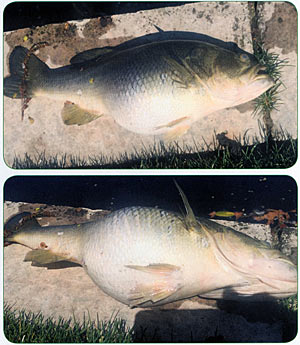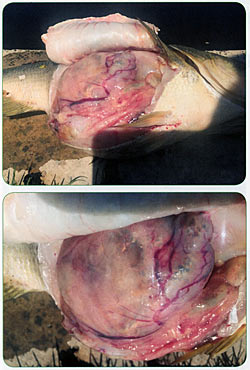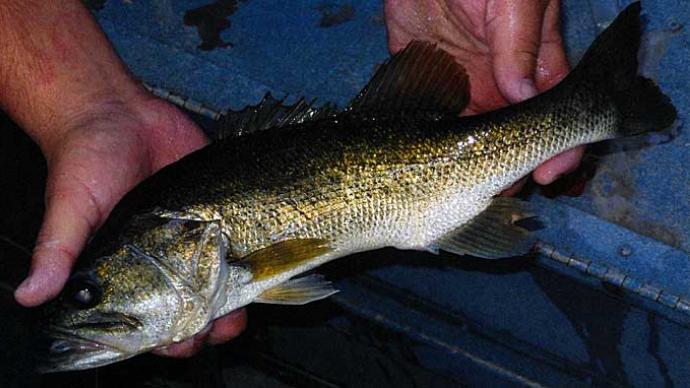
You've faithfully followed all the sage advice. Your pond was thoughtfully designed and built. The best habitat was added. Healthy fish were properly stocked. Here you are, several years in, enjoying this creation immensely.
Forage fish are thriving. Game fish look like sumo wrestlers. All is well.
That's what one Dallas, Texas, area pondmeister thought, too. In March, part of two counties were hit with a flash flood. With urban ponds dotting the Dallas landscape, this homeowner was proud of his backyard fishing pond and how he's managed it for several years. He was growing some big bluegills and had several bass topping six pounds. After the flood, his water color had changed to chocolate milk. Debris floated everywhere. There was even a bicycle tire inner tube wrapped around a tree in his yard contrasting with hamburger wrappers in the brush debris line he was raking in a pile halfway to the house.
But, what concerned him most were his precious fish, piping for air, gasping at the surface, trying to survive an upheaval of urban flush.
He called his fisheries biologist, who immediately headed that way. Within two hours there were dead fish, although not many.
The owner was truly concerned about his fish, worrying they had contracted some sort of disease due to the drastic change in water chemistry, flushing of who-knows-what into his backyard paradise, and the nature of their unnatural behavior.

When the biologist arrived, he quickly sorted out the situation, took some water samples for the lab, and did his field work. pH of the water had changed due to influx of runoff from the surrounding, mostly concrete, watershed. There was an oily sheen on the surface, typical of street runoff. The simple parameters were mostly fine. Alkalinity was good, hardness was normal, but there were several other factors that contributed to the stress of all the fish, and the death of some. The water temperature, due to an overly warm late winter/early spring, had been hovering in the mid-70's. This rain event was also blessed with abundant hail. The water temperature dropped almost twenty degrees in three hours. That was the main culprit. Temperature shock can absolutely kill fish.
But, the biologist did see something which bothered him considerably. A huge, fresh-dead bass, floated adjacent to a decorative paver retaining wall. He retrieved the bass, which sported a giant abdomen. It was a beast. He took a few photos, but as he thought about it, this fisheries guy knew that bass shouldn't have such a large, distended belly, even during pre-spawn times when female bass weigh the most.
He laid it on the retaining wall, pulled out his pocketknife, and did a necropsy. Inside the bass was a heavily vascularized tumor about as big as a baseball. The tumor was probably malignant, but there wasn't a way to actually diagnose that.
That bass had a disease. It most likely died due to the rapid environmental change, but the tumor didn't help its ability to survive.
Now, I'm not trying to alarm you into thinking your bass may contract some kind of cancer. Keep in mind, this bass lived in the city, with all the influences of a polluted environment.
Over the years, I've seen bluegills with what looks like a cluster of white, cauliflower-looking warts. I've seen parasites inside of fish, attached to fish, and growing in the eyes offish, but over 38 years of working with fish, and working on fishponds, I have only come across a handful of situations where a disease became an epidemic, causing concern. And, each one of those occasions was in an intense aquaculture situation where fish were crowded and the spread of disease was a big fear.
I'll safely advise that your fish are not likely to suffer a disease unless they are overcrowded or your water quality deteriorates, but when I saw the photos of the bass with the huge tumor, I thought it interesting enough to write about in these pages. If fish have happy, healthy water, plenty of food, and good space without being crowded, diseases are of the least concern.
Reprinted with permission from Pond Boss Magazine



